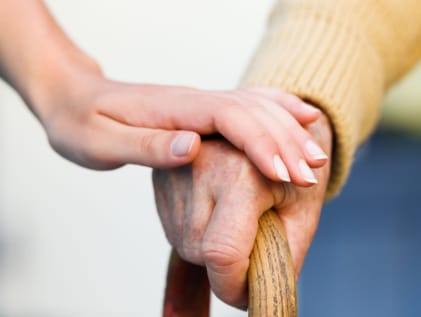Approximately 58 million Americans suffer from joint pain and arthritis, a condition that can be incredibly painful and disruptive to one’s daily routine. While medication is often necessary to alleviate joint pain associated with arthritis, the relief from medication is typically temporary. Natural approaches are often recommended in conjunction with medication, depending on the severity of one’s pain. The following suggestions may help to reduce joint pain and symptoms of arthritis:
Exercise
Exercising lubricates joints which, in turn, reduces swelling or pain, improves symptoms of arthritis, and promotes better flexibility. Exercising for joint health should involve low-impact activities and include components of stretching, balance training, and strength training. Some of our favorites include:
- Swimming and Water Aerobics: Exercising in water provides a low-impact cardiovascular workout that simultaneously strengthens the muscles. Swimming, walking laps, or enrolling in a water aerobics class are all great ways to get moving while keeping stress on the joints to a minimum.
- Walking: Walking is easy on the joints and aids in strengthening the muscles that protect the knee and hip joints. Also, studies have shown that walking may prevent arthritis from forming and can reduce arthritis-related pain.
- Stretching: Working through a series of self-guided stretches is a simple way to promote flexibility, deter the decline of joints, and maintain joint range of motion. Seniors should stretch at least two to three times a week, though five times per week is ideal.
Healthy Eating
Choosing fresh fruits, vegetables, and whole foods rich in antioxidants can help reduce inflammation in the body and ease joint pain. While research is ongoing, doctors have found that the following foods are some of the best for those who have arthritis: green tea, salmon, tuna, sardines, berries, apples, pomegranates, vegetables, olive oil, nuts, dark chocolate, and salsa.
Furthermore, healthy eating, combined with exercise, may lead to weight loss, which will relieve the pressure that extra weight puts on joints, improve mobility, decrease pain, and prevent further damage.
Hot and Cold Therapy
Alternate between using both hot and cold therapies on areas of extreme pain. Applying heat will help to increase blood flow while reducing inflammation. Try taking warm baths or showers in the morning to reduce stiffness. Electric blankets and heating pads are good options for reducing discomfort during periods of relaxation or while sleeping. Alternatively, applying an ice pack wrapped in a towel can provide quick pain relief and improve swelling.
As always, please consult your doctor before embarking on a new health routine or trying a new remedy.

